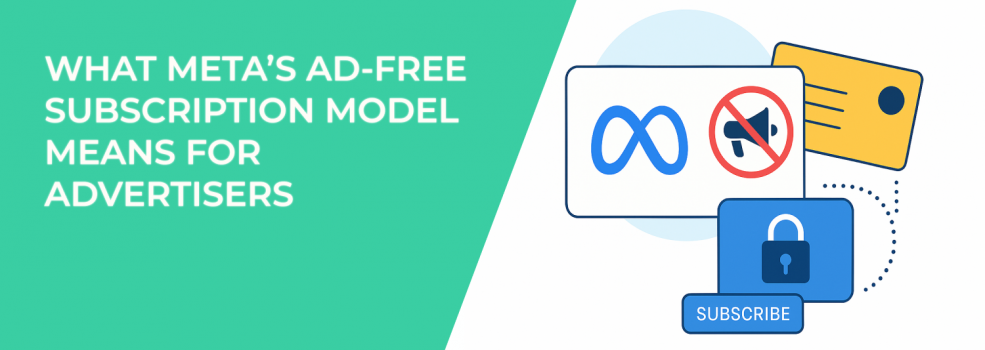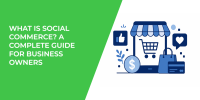Meta now offers an ad-free experience for Facebook and Instagram users in Europe — including the U.K. The cost? Around €9.99/month on desktop and €12.99/month on mobile.
This shift might sound minor at first. But for advertisers, it raises big questions.
Because when users pay to opt out of ads, they also opt out of targeting, retargeting, and tracking. And that means you’ll need to rethink how you reach — and measure — your audience.
Let’s break it down.
What’s Actually New?
Meta’s ad-free tier is part of its response to Europe’s tightening privacy rules. It gives users a simple choice:
-
Use the platform for free — and see personalized ads.
-
Pay a monthly fee — and browse without any ads at all.
But here’s what matters most to advertisers: those who choose the ad-free experience are completely removed from Meta’s ad system. That means:
-
You can’t target them.
-
You can’t track their actions.
-
You can’t retarget them later.
-
Their activity won’t show up in your campaign data.
So if high-value users choose to go ad-free, they quietly disappear from your marketing funnel — and your reporting.
Why It Matters for Advertisers
Even if only a small percentage of users choose to pay, that group could include the people you care about most:
-
Tech-savvy professionals who value privacy.
-
Affluent buyers more likely to spend.
-
High-intent shoppers who convert with fewer touchpoints.
Losing access to these segments can throw off your entire campaign strategy. Your reach drops. Your lookalike models lose accuracy. And retargeting becomes harder to scale.
You may already be seeing signs. If your delivery is stuck or your audiences feel “thinner,” check out what to do when your ad set shows zero reach.
How Advertisers Should Adapt: 4 Actionable Shifts
You don’t need to start over, but you do need to adjust. Here’s how.
1. Build Stronger First-Party Data
Don’t rely on Meta’s data alone. Own your audience.
The more you collect and manage your own customer data, the more control you have — even as platforms like Meta become more privacy-conscious.
Focus on:
-
Email list building: Use lead magnets like free resources, early access offers, or giveaways to encourage users to opt in.
-
On-site lead forms: Capture info directly on your website rather than relying only on Meta’s native forms.
-
Loyalty programs: Incentivize account creation and repeat engagement to gather valuable behavioral insights.
Once you have first-party data, you can create high-quality custom audiences that are more resilient to platform-level changes.
2. Widen Your Targeting (But Stay Relevant)
Precision is great — until it becomes a weakness.
Over-targeting is risky when audience pools shrink. But broad targeting doesn’t mean random targeting. Instead, you want layered targeting that still aligns with buyer intent.
Here’s how:
-
Use broad interest categories like travel, wellness, or tech, and combine them with behavioral filters like past purchases or device usage.
-
Layer detailed demographics (such as age and location) with Facebook’s suggested interests for more context.
-
Test different combinations of interests and behaviors to find scalable segments.
This strategy lets you cast a wider net — without losing message-to-market fit. Not sure where to start? Learn how to use Facebook’s detailed targeting effectively.
Also, revisit your core personas. Who are you really trying to reach? This step-by-step guide will help you build profiles that match your actual data, not just assumptions.
3. Choose Objectives That Match the Reality of Tracking
Conversions are harder to track. That doesn’t mean they’re not happening.
With more users opting out of tracking, attribution is getting fuzzier. So your campaign objectives — and how you measure success — need to reflect that.
Try this:
-
Use mid-funnel objectives like leads, add-to-cart, or content views when top-funnel traffic is hard to track.
-
Compare on-platform vs. off-platform metrics to get a clearer picture of what's actually working.
-
Stop obsessing over ROAS alone — consider metrics like time on page, scroll depth, or email open rates.
Need help choosing the right goal for your campaign? This guide to Meta’s campaign objectives will walk you through what each one means and when to use it.
4. Make Your Creative Do More Heavy Lifting
With less targeting data, your creative needs to do more of the work.
The days of bland, generic ad creative are over. If you’re targeting broader audiences or relying more on Meta’s algorithm to optimize, your messaging and visuals need to immediately connect.
Here’s what to focus on:
-
Hook quickly: Grab attention in the first 2–3 seconds with bold headlines or movement.
-
Speak to pain points: Get specific about what the audience struggles with — and how you solve it.
-
Highlight benefits first, features second: What does the user get from your offer?
-
Test formats: Try carousel, Reels-style video, and static ads side-by-side to see what performs.
If you're unsure what to prioritize, this article on what to test first — creative, copy, or audience will help you set your testing roadmap.
Looking Ahead: What This Signals Long Term
Today, this change is rolling out in Europe. Tomorrow? It could expand elsewhere.
Meta isn’t just experimenting with pricing — it’s preparing for a future where privacy comes first, and data collection isn’t guaranteed. That means less visibility for advertisers and more pressure to build stronger strategies outside of platform targeting.
If you're still relying on Facebook’s algorithm to do the hard work, that window is slowly closing.
The advertisers who thrive in this new era will be:
-
More creative.
-
More data-smart.
-
Less dependent on exact-match targeting.
Final Thoughts
Meta’s ad-free model isn’t a crisis — but it’s a clear shift. And the smartest advertisers won’t wait to adapt.
Here’s what to do now:
-
Invest in first-party data so you're not blind when targeting disappears.
-
Layer your audience targeting to reach new people without wasting budget.
-
Choose smarter campaign objectives that reflect how performance is actually measured.
-
Test creative like your results depend on it — because they do.
The platforms are changing. Your users are changing. Your strategy should too.

